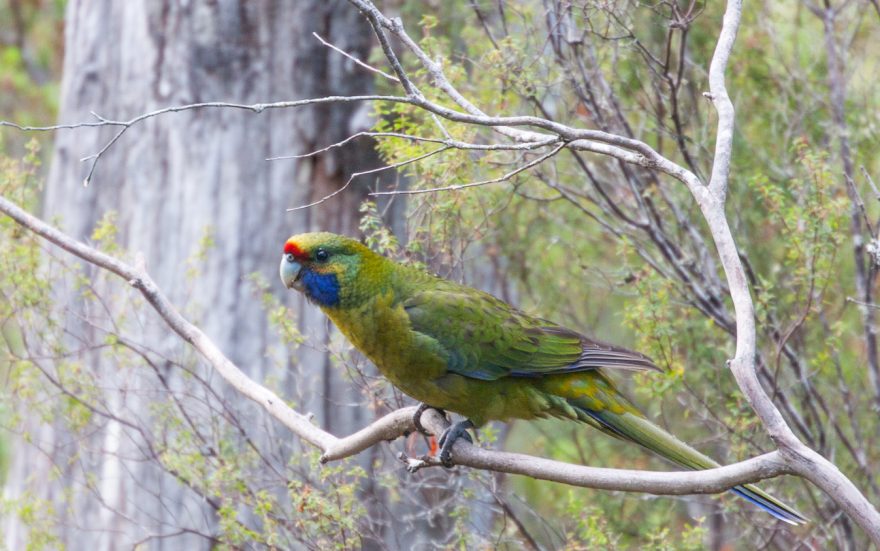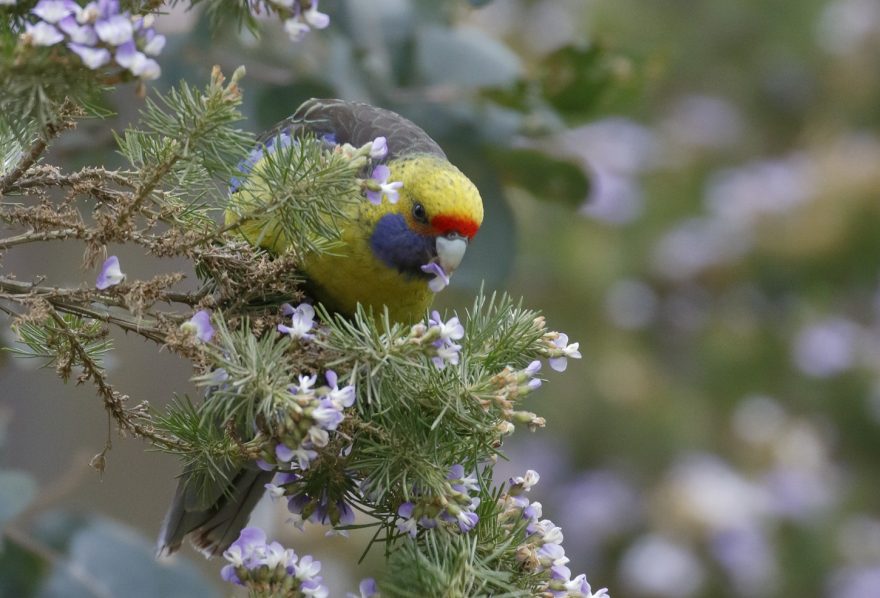The green rosella is medium sized parrot found only on the Australian state of Tasmania and the surrounding bass-straight islands. In aviculture, it is among the least commonly kept of the six rosella species, due to its intolerance to high temperatures, aggression, and somewhat dull colour scheme.

Housing & Compatibility
Green rosellas can be aggressive and should only be housed in single-pair aviaries. If housed in a bank of aviaries, double wiring between sections is required to prevent fighting and injury.
They are prone to obesity in captivity and therefore require adequate flying space of at least 5 metres to get the exercise they require.
Green rosellas are best suited to Tasmania’s cold climate. They can succumb easily to heat stress when kept in warmer states, unless careful consideration is taken when designing their aviary. A fully-roofed well-shaded aviary with automatic misters may be necessary to protect them from the summer heat on mainland Australia.
Green rosellas will hybridize with other types of rosellas and other species of Australian parrots, including bluebonnets, hooded parrots, mulga parrots, mallee ringnecks, and red-rumped parrots. To prevent captive bloodlines from becoming polluted, the green rosella should only ever be housed with other green rosellas.
Rosellas enjoy chewing on wood, so the aviary needs to be constructed out of metal to prevent damage. Non-toxic leafy branches, particularly from eucalyptus trees, should be placed in the aviary to give the rosellas something to chew. This provides them with entertainment and exercises their beak and feet. They will eat seeds and flowers.
Diet & Feeding
Seed forms the basis of the green rosella’s diet. A quality mix designed for small parrots or budgies will be acceptable. Soaking or sprouting seed significantly increases its nutritional value. Due to their propensity to obesity, access to sunflower seed should be eliminated or significantly limited.
Green rosellas also require a wide variety of fresh food to ensure good health. They enjoysweet juicy fruits such as apple and pear, but it’s important to also provide more-nutritious green foods such as green seeding grass, silverbeet, chickweed, and bok choi. Flowers and berries—particularly from native Australian vegetation—are particularly enjoyed.
Pellets can be offered as a more nutritious alternative to seed, however many birds are unwilling to consume them.
Live food, such as mealworms or termites, may be appreciated by some birds as an extra source of protein during the breeding season.

Breeding
Green rosellas are challenging to breed in captivity, especially in warmer climates. They can be fussy about mate selection, so it’s important to pair birds as early as possible—ideally as juveniles. It may take up to three years for new pairs to commence breeding.
Breeding usually commences in spring as the weather begins to warm up. The male will court and feed the hen, who will begin inspecting available nesting boxes. Several different nesting boxes should be provided for them to chose from.
Incubation is performed exclusively by the hen and lasts for roughly three weeks. Young birds will fledge at 5 weeks of age and become fully independent from their parents roughly three weeks later. Due to aggression, young birds must be removed from their parents when they reach independence.
Green rosellas do not tolerate nest inspections.
Sexing
Green rosellas are difficult to visually sex, especially as juveniles. Females are slightly duller in colour than males.
Mutations
There are no established colour mutations in Australian aviculture. Beware of “mutations” which are actually just hybrids between different rosella species.
Health
A strict worm control regime and regular preventative treatment for bacterial and fungal infections is critical to ensure the long-term health of any bird.
A properly looked after green rosella can live for 15-20 years.